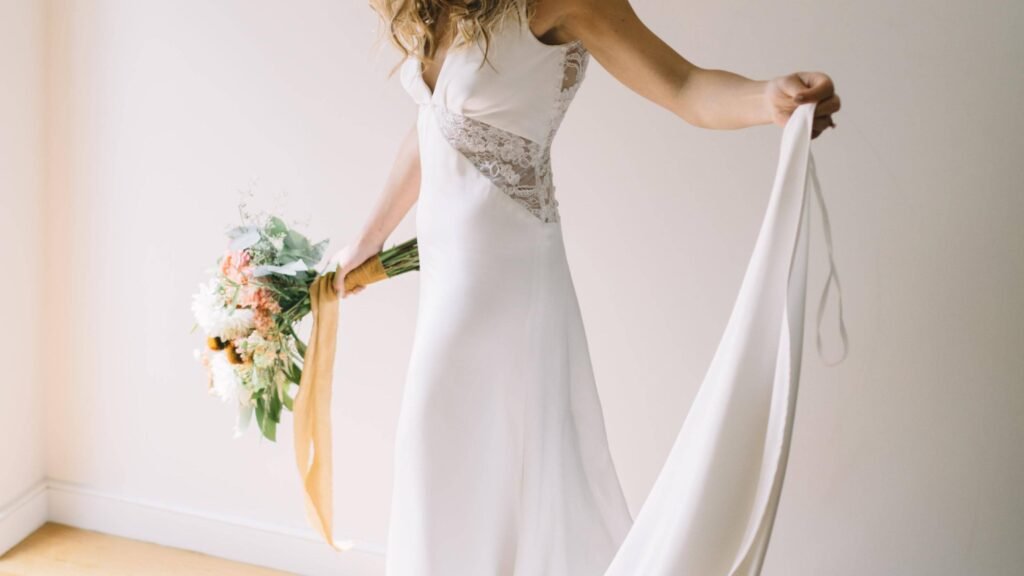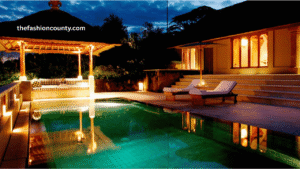6 conventional Fabrics for Wedding Dresses and Why They Are Popular

Not all fabrics for wedding dresses are created equal. Some fabrics are superior for textured designs, others are enormous for fluffing, looking light, and others are better than life-size prom dresses. Before you buy a wedding dress, you must know what to expect from the fabric. We spoke with Terry Hall, fashion director at Kleinfeld Bridal in New York, about the six most common fabrics used to make wedding dresses and why they work.
Read on to find out more about this gorgeous fabric and why everyone makes the best choices for wedding dresses, and why it’s crucial to pick the right fabric for the special day.
Satin
It’s a common misconception, says Hall, but “satin” isn’t fiber, it’s the end result. You can have satin that is made of pure silk, all polyester, or blends. The same goes for lace, tulle, taffeta – almost any fabric. In general, fabrics made from natural fibers breathe better, but can also be more expensive or crease more easily, which increases the mix and the plastic.
Satin is one of the most common, versatile and durable fabrics for wedding dresses. Satin has a sleek finish with lots of body parts, which makes it ideal for textured dresses. This is a backing fabric that fits any body type, and is a great choice for styles with ruffles, drapes, and ball gowns. Most wedding satin is usually made from 100 percent silk.
Charmeuse
Charmeuse is a light, rich fabric with beautiful draperies and a shimmery sheen. It is typically made of silk, but can also be made from synthetic fibers. Charmeuse has a watery effect that’s very slippery but not very pardoning, says Hall. Mostly cut in bias (diagonally across the nipple to encourage draping) and used in columnar dresses, the charmeuse is extravagant but shows every flaw.
Chiffon
Extremely clean and lightweight, chiffon is a lightweight fabric. Because it is so transparent, it is often used in lining or as a coating for more substantial fabrics. This silky fabric floats, weightless, but easy to wipe and tap.
Organza
Organza is a transparent, lightweight fabric traditionally made of silk. Organza, however, is much louder than chiffon. Organza although made of chiffon is more textured, although it is still light and airy. This makes it ideal for weddings with warmer weather. It’s also a very delicate cloth, so watch out for hugs and pulls.
Tulle
Did you know the light, net-like fabrics used to make ballerina tassels? This is tulle. Pure tulle with an open weave that looks like a net. The fabric can also contain lace designs. According to Hall, the tulle ball gown felt transparent and airy, but shaking it off gave it more structure. After all, it is a very delicate fabric that can easily be attached to jewelry and wedding rings.
Lace
Lace is one of the materials for a wedding dress that adds elegance to any dress. Most often used as overlays or details, lace is available in a variety of stunning styles. Like the tulle, the open weave is prone to cuddling. Lace is usually named after the city where it was made from. Some of the most popular top varieties are:
- Chantilly: very detailed, open dots with definite edges
- Alençon: lace with a strong motif in netting and covered with string
- Venison: a heavier, textured tip that’s often used in winter weddings
As you can find fabrics other than satin, charmon, chiffon, tulle, organza, and lace, these are the most conventional fabrics used for wedding dresses. Hall notes that interest in several types of silk (mikado, radzimir and gazar) is growing. It is noteworthy that Kate Middleton’s wedding dress was made of gazar material. Other hot trends for this type of wedding dress material, according to Hall, include creative and artistic tattoos and laser cut tips that are traditional but still fresh and modern.






